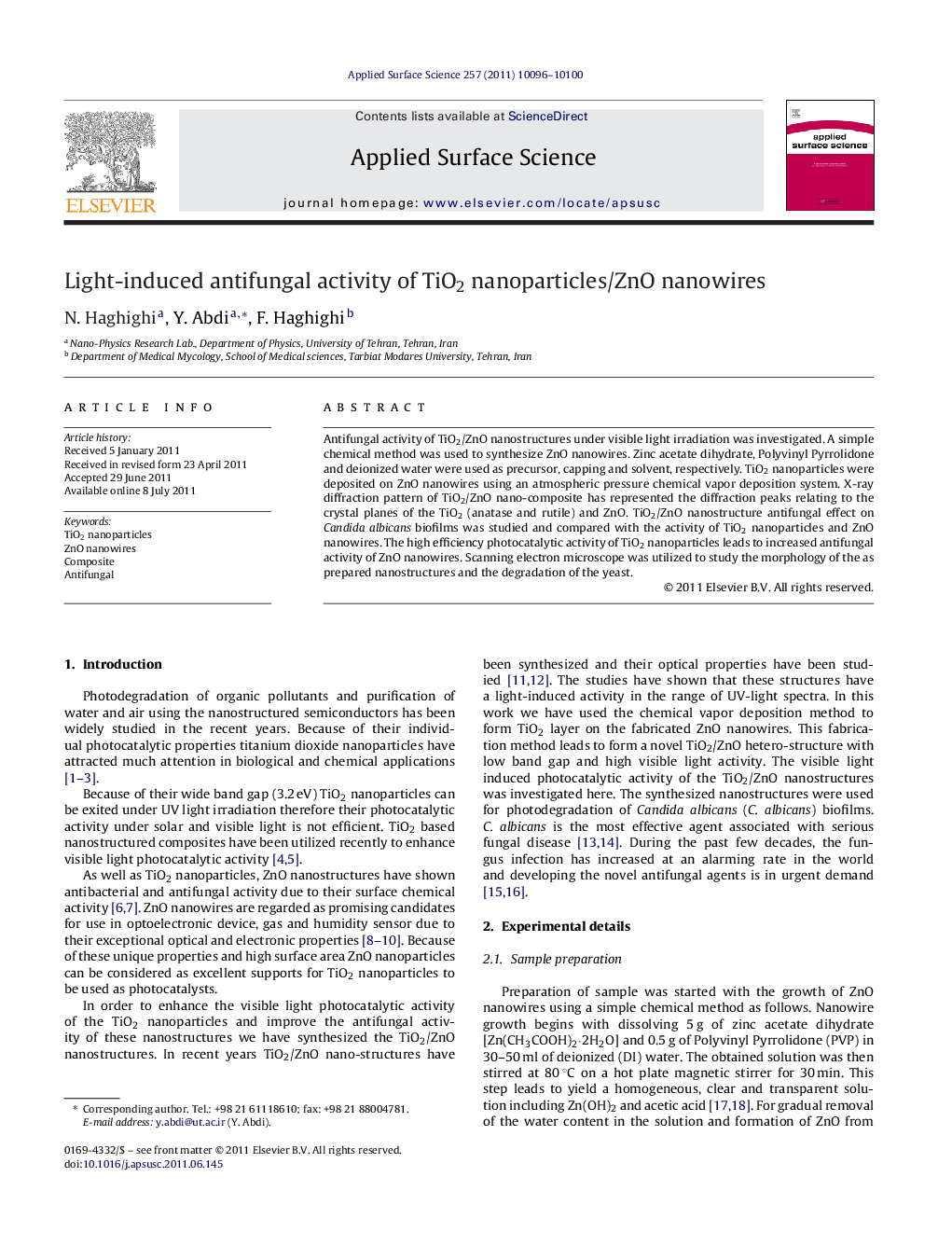| Article ID | Journal | Published Year | Pages | File Type |
|---|---|---|---|---|
| 5367398 | Applied Surface Science | 2011 | 5 Pages |
Antifungal activity of TiO2/ZnO nanostructures under visible light irradiation was investigated. A simple chemical method was used to synthesize ZnO nanowires. Zinc acetate dihydrate, Polyvinyl Pyrrolidone and deionized water were used as precursor, capping and solvent, respectively. TiO2 nanoparticles were deposited on ZnO nanowires using an atmospheric pressure chemical vapor deposition system. X-ray diffraction pattern of TiO2/ZnO nano-composite has represented the diffraction peaks relating to the crystal planes of the TiO2 (anatase and rutile) and ZnO. TiO2/ZnO nanostructure antifungal effect on Candida albicans biofilms was studied and compared with the activity of TiO2 nanoparticles and ZnO nanowires. The high efficiency photocatalytic activity of TiO2 nanoparticles leads to increased antifungal activity of ZnO nanowires. Scanning electron microscope was utilized to study the morphology of the as prepared nanostructures and the degradation of the yeast.
⺠ZnO/TiO2 nanostructure can be used as antifungal material. ⺠TiO2 nanoparticles significantly improve the antifungal activity of the ZnO nanowires. ⺠The viability of the fungi is suppressed considerably around the ZnO/TiO2 nanostructure.
